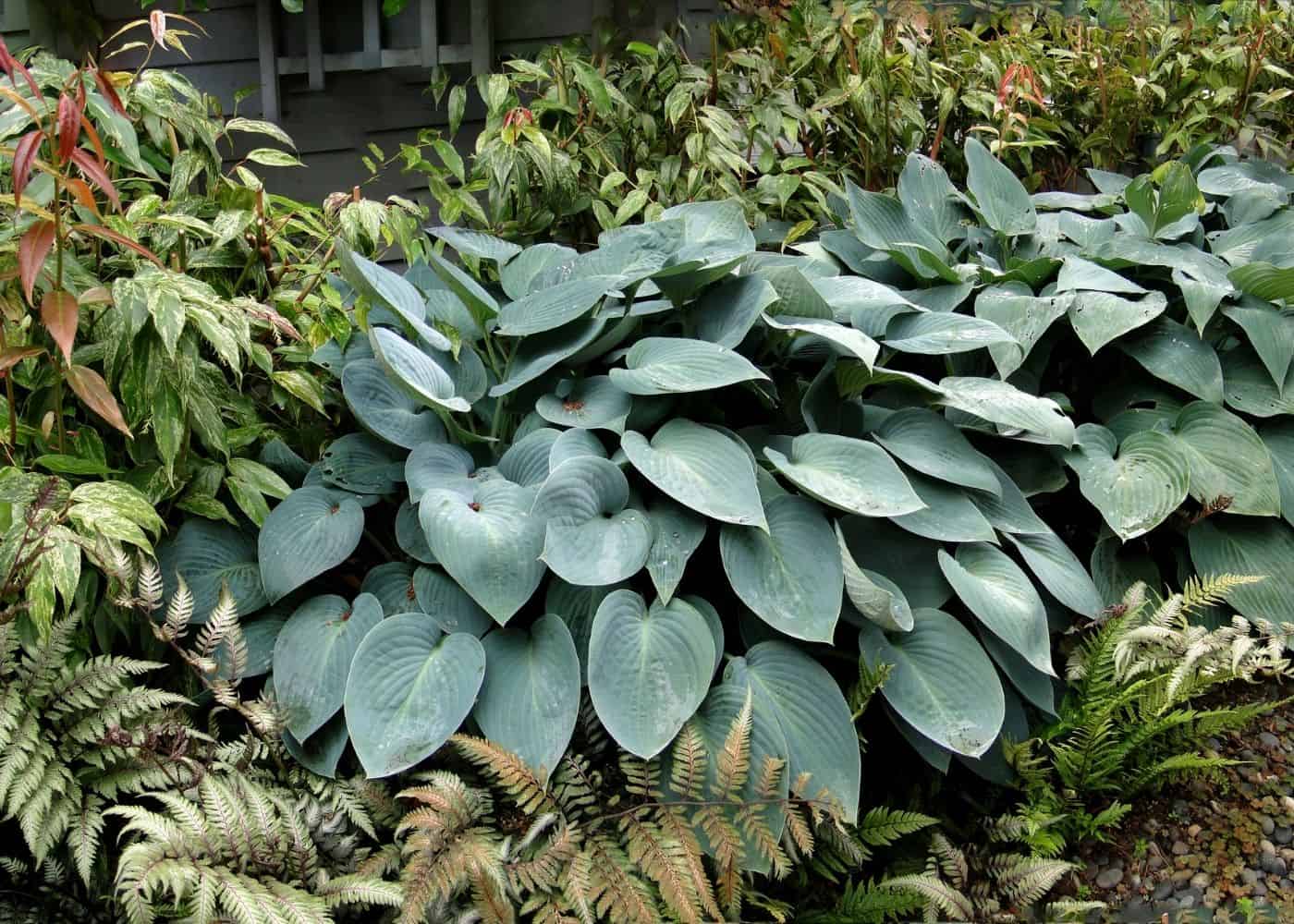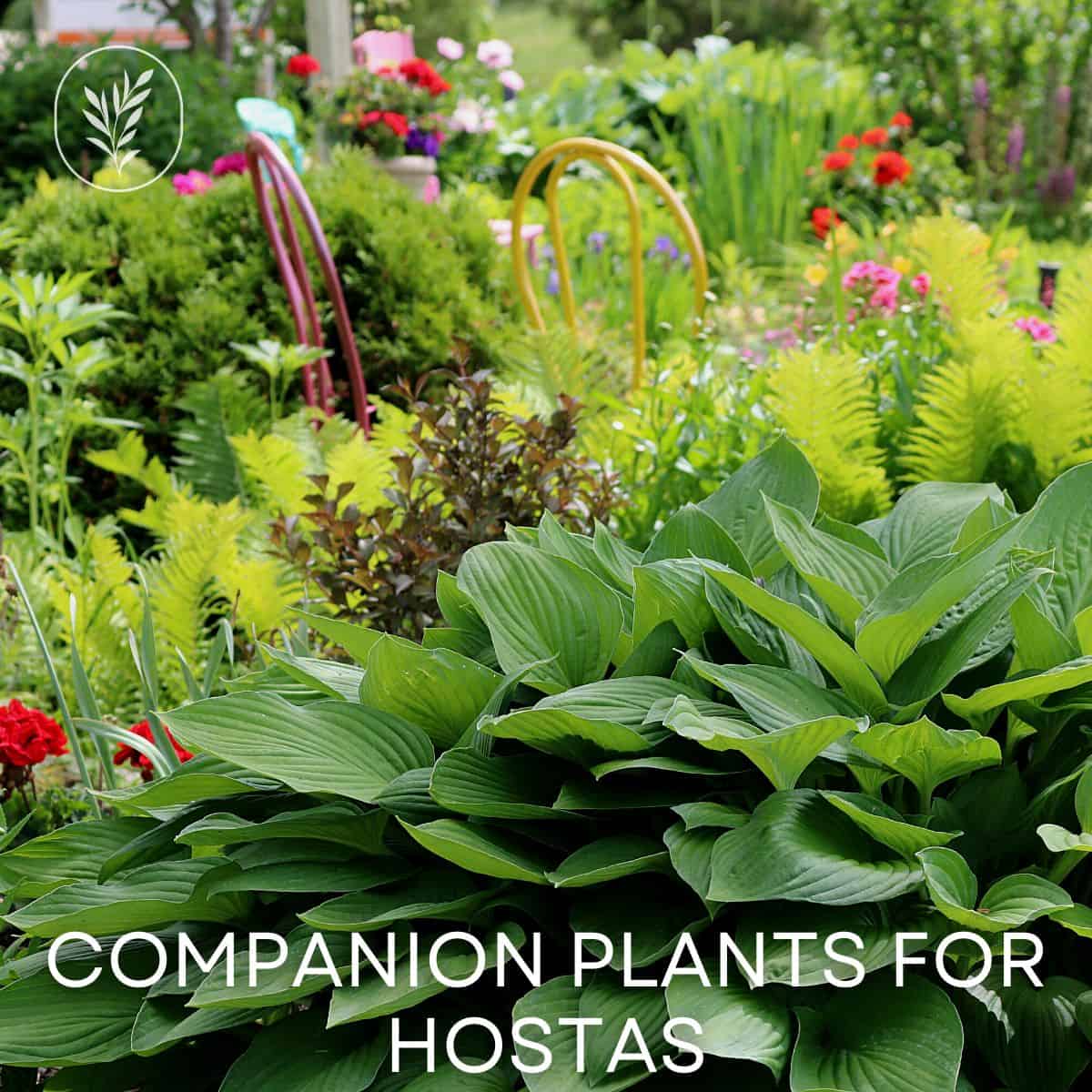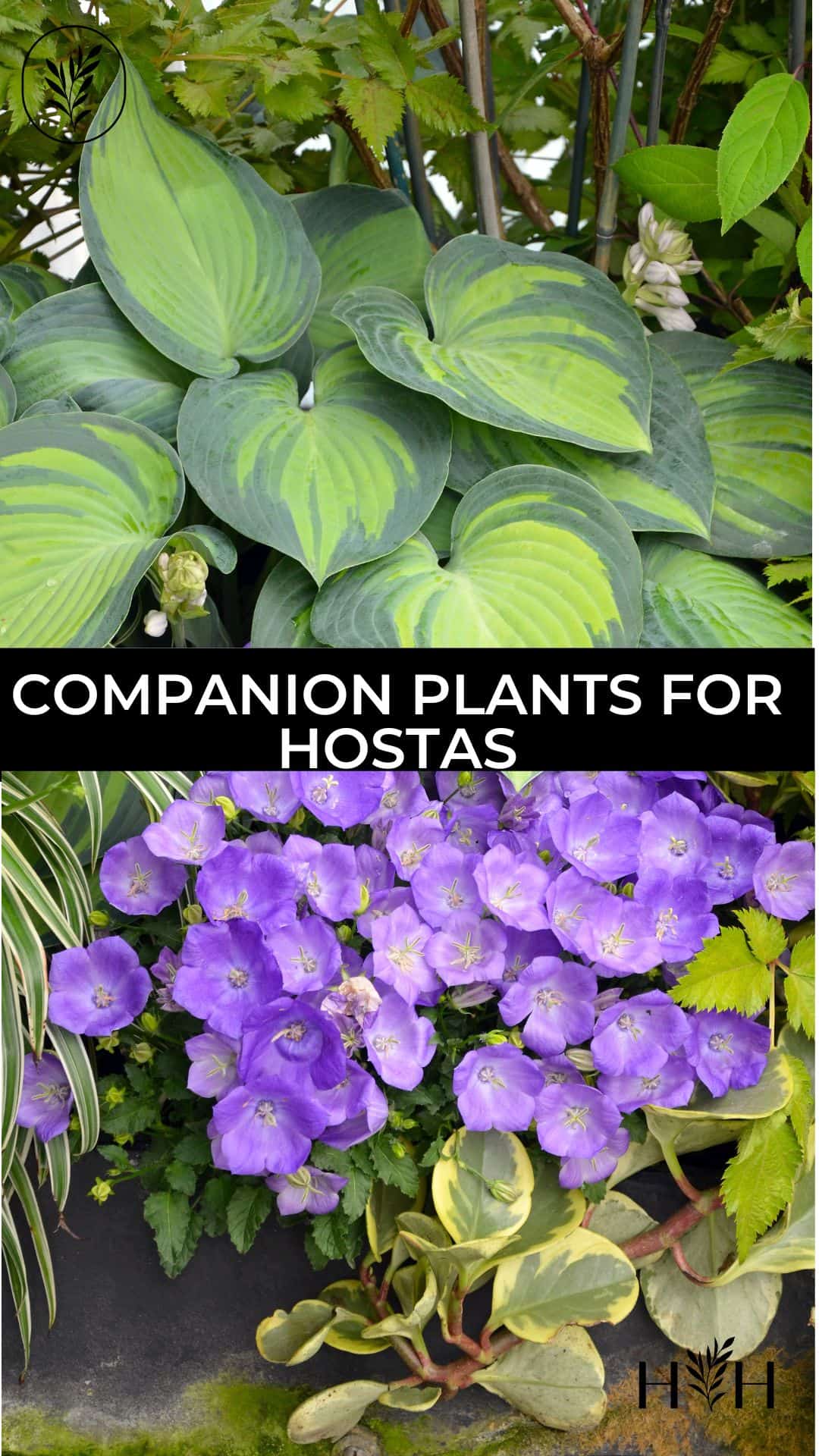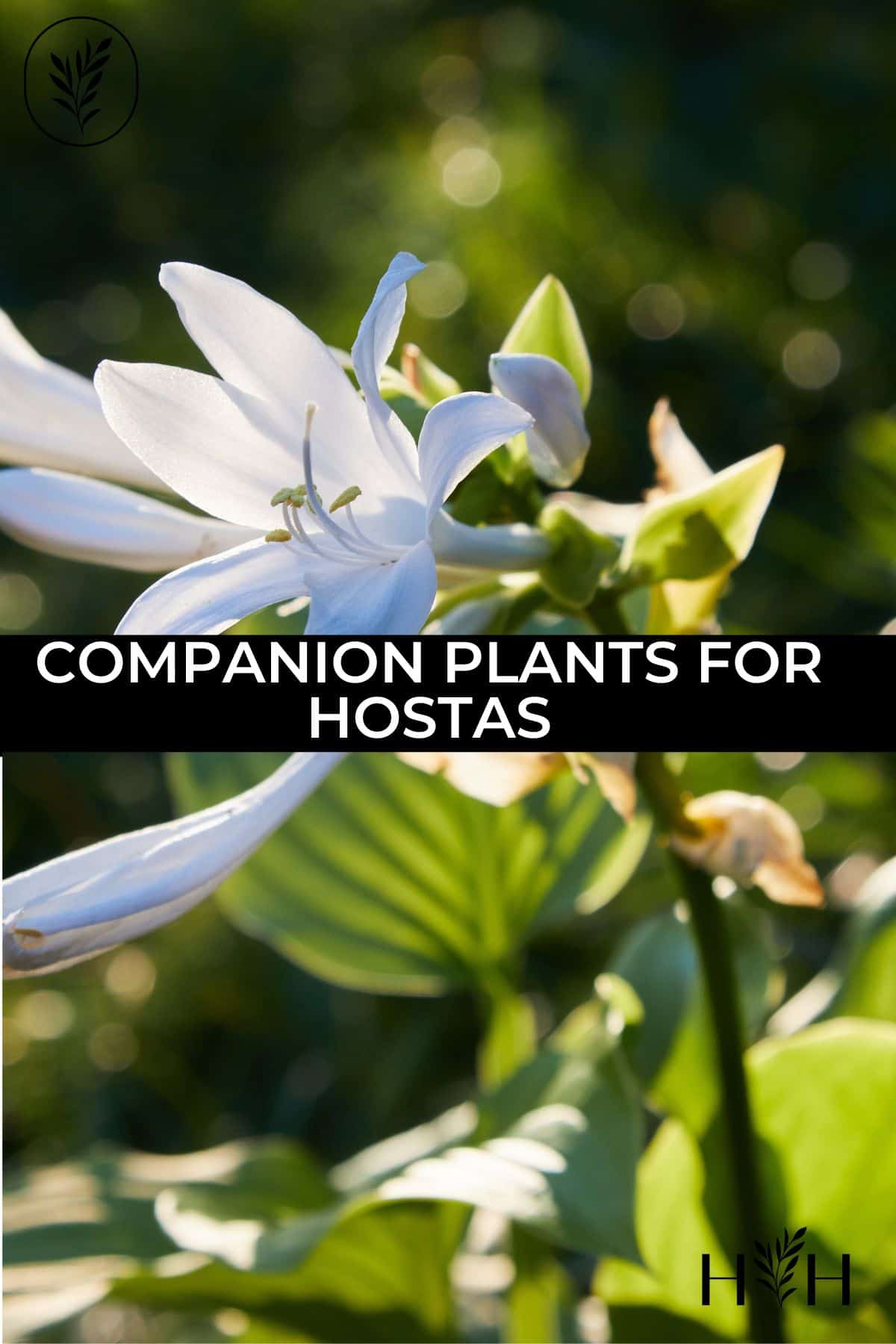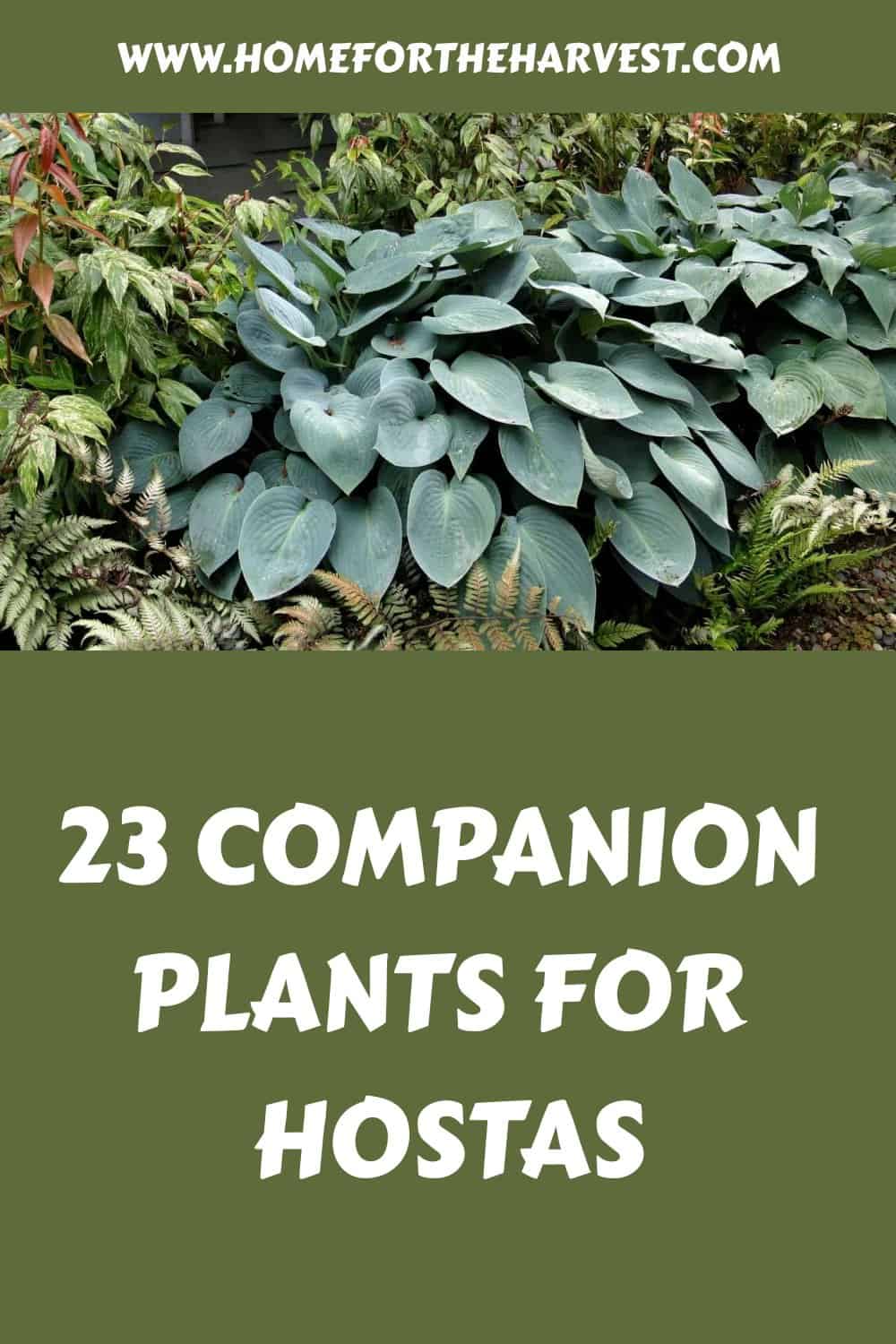While hostas are lovely on their own, they can be much better when surrounded by complementary companion plants. You can create an eye-catching and inviting design by choosing the right plants to pair with your hostas. Here are some of the best companion plants for hostas to add to your garden.
1. Fern
Ferns are a classic companion plant for growing alongside hostas. They share a similar preference for shady, moist conditions, and their ethereal fronds of finely textured foliage can contrast the broad leaves of hostas.
When planning your perennial shade garden, compare the mature heights of the ferns you’re considering to the hostas in your garden. Tall ferns make a great backdrop for smaller hostas, while shorter types of ferns can line a pathway in front of giant hostas.
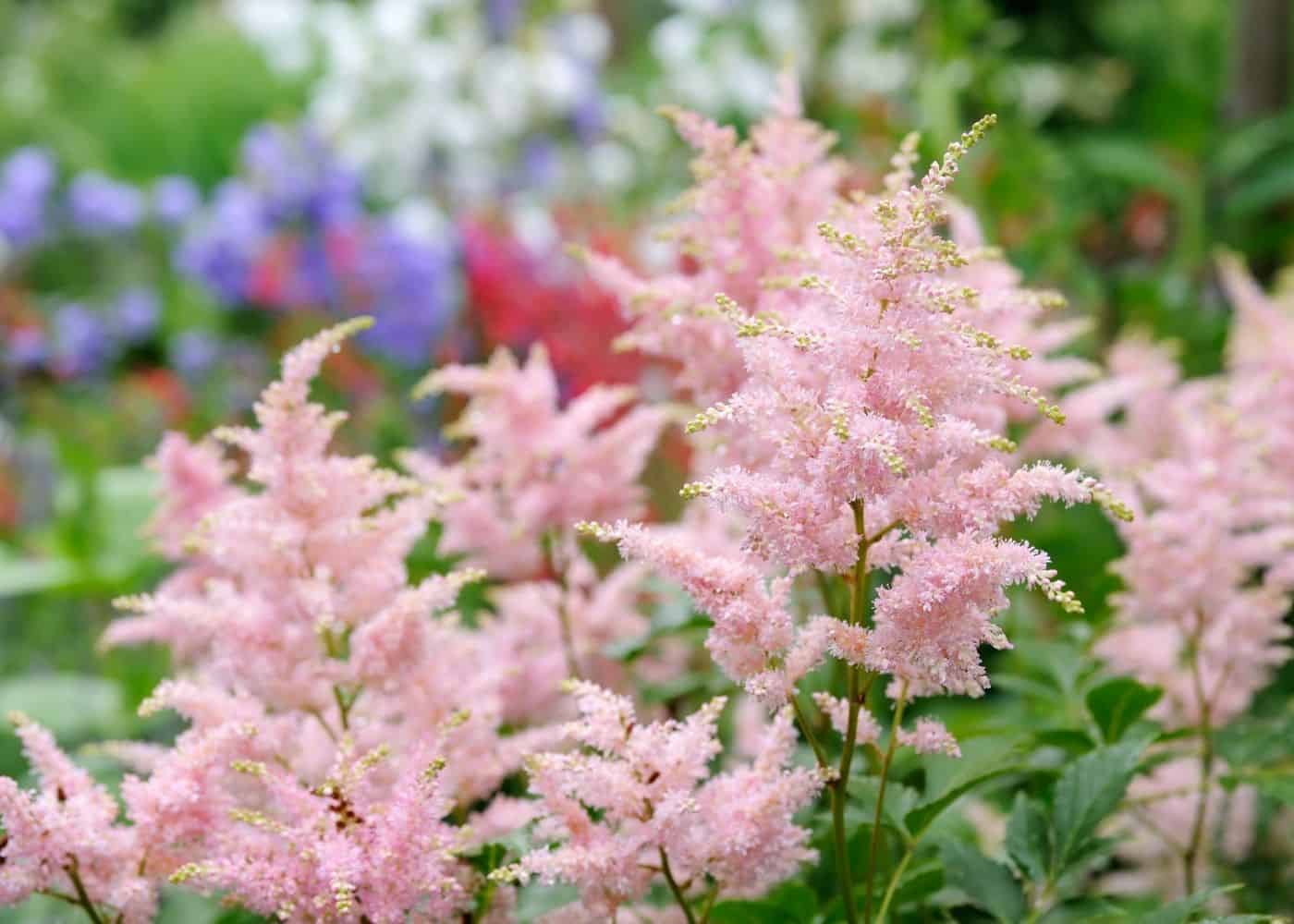
2. Astilbe
Astilbe plants are another excellent choice. These showy flowers bloom in shades of pink, purple, and white and make a stunning addition to any partially shaded spot in the garden. Plus, they are relatively easy to care for and require little maintenance.
Astilbes are one of the most popular shade-loving flowering perennials and tend to be paired either with mini hostas in front of them or larger hostas behind them. Keep an eye out for your pink spiky astilbes in the late spring as they attract hummingbirds to your shade garden!
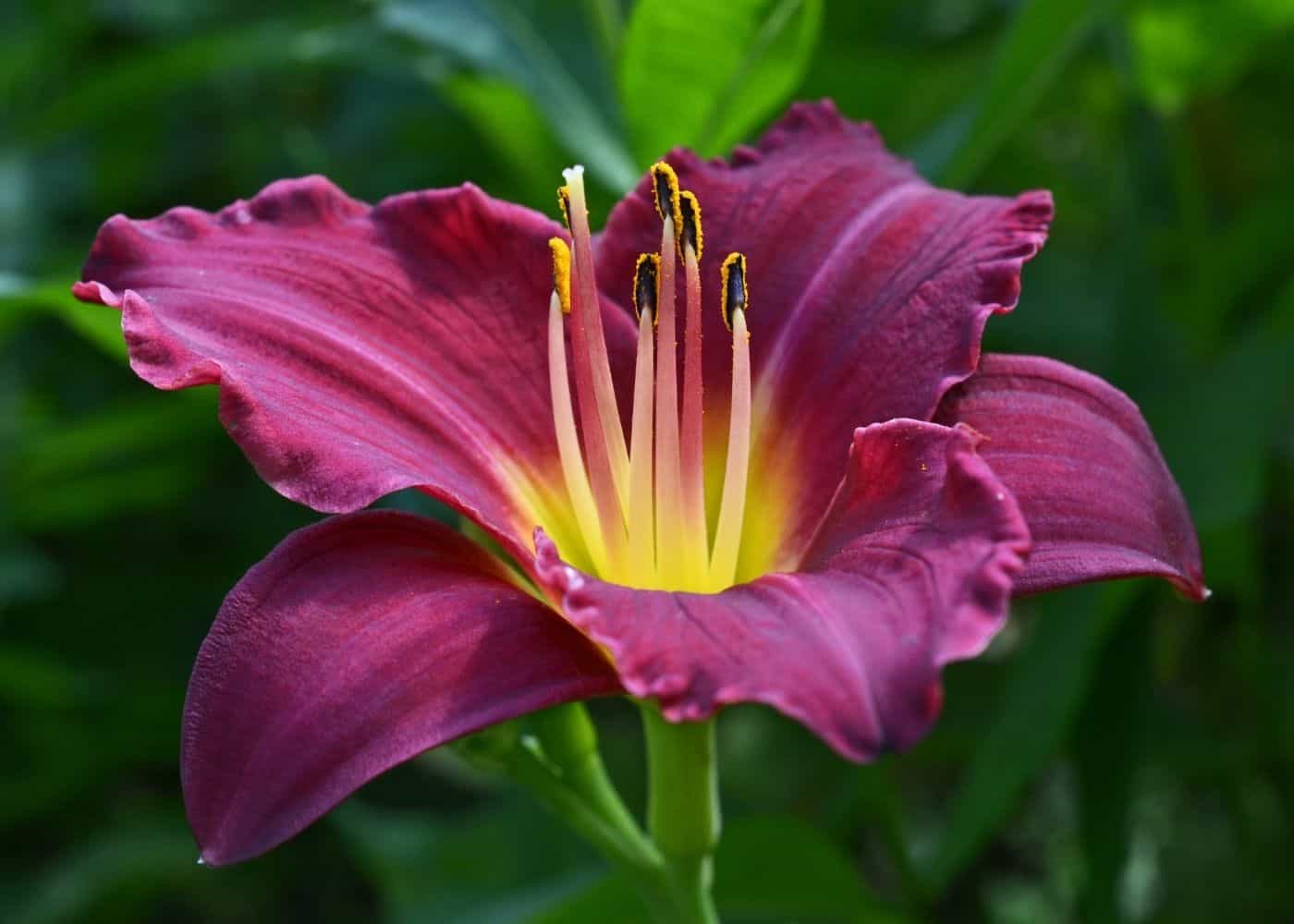
3. Daylily
Daylily is a versatile plant that can serve as a ground cover, border plant, or focal point. Daylilies come in a wide range of sizes and colors, so it’s easy to find one that will complement your hostas. Daylilies bloom best when grown in areas that receive morning sun, so skip these flowers in full-shade areas and save them for partial shade spots.
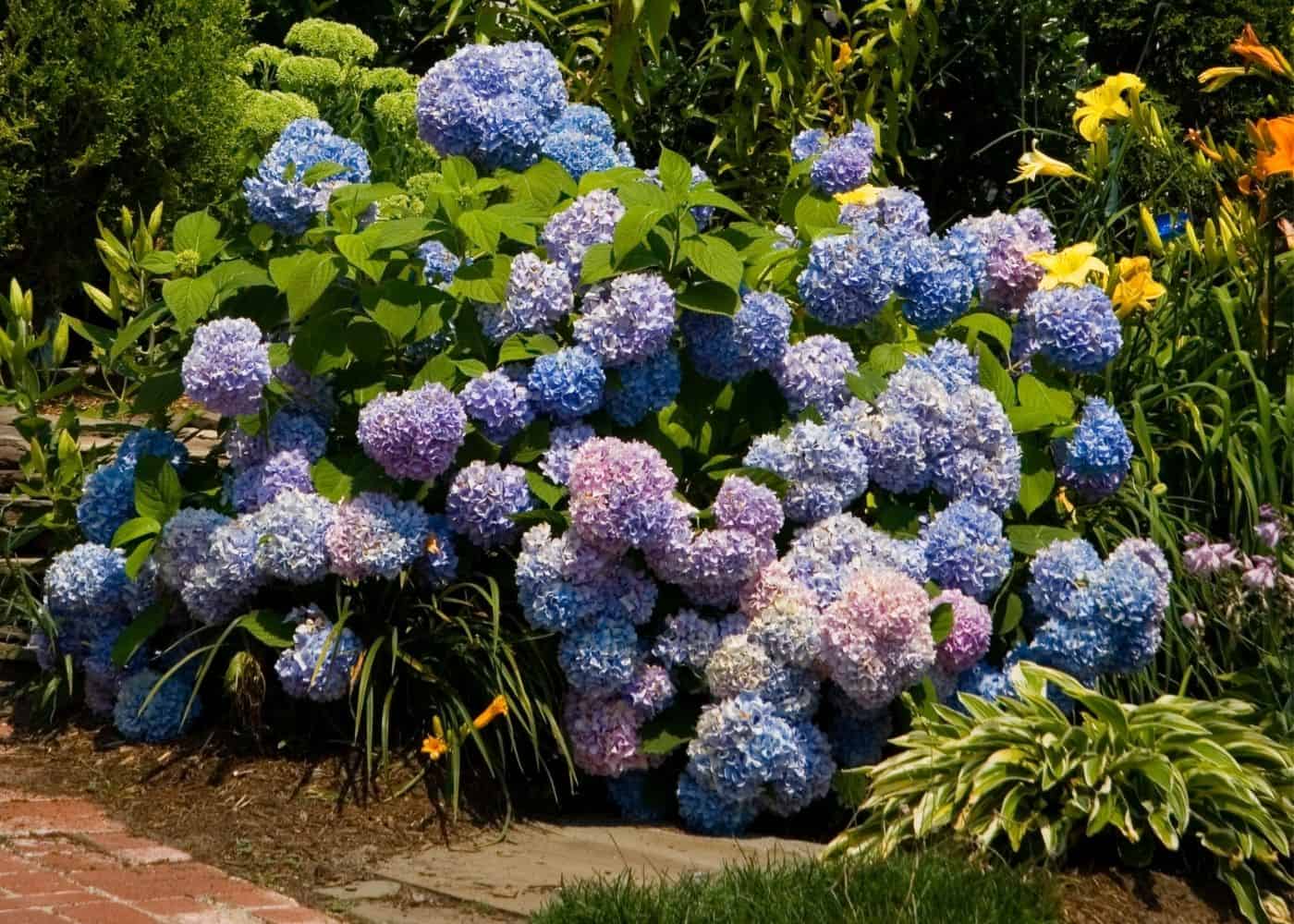
4. Hydrangea
Hydrangea is one of the best companion plants for hostas. These shrubs produce large clusters of lace-like flowers in shades of pink, blue, and purple, which contrast the broad leaves of the hostas quite well. They also thrive in moist soil.
Choose mophead varieties like Nikko Blue or Summer Crush, some of the more colorful hosta companions out there. These shrubs will flower best above the hosta plants if placed in partial shade/sun rather than full shade.
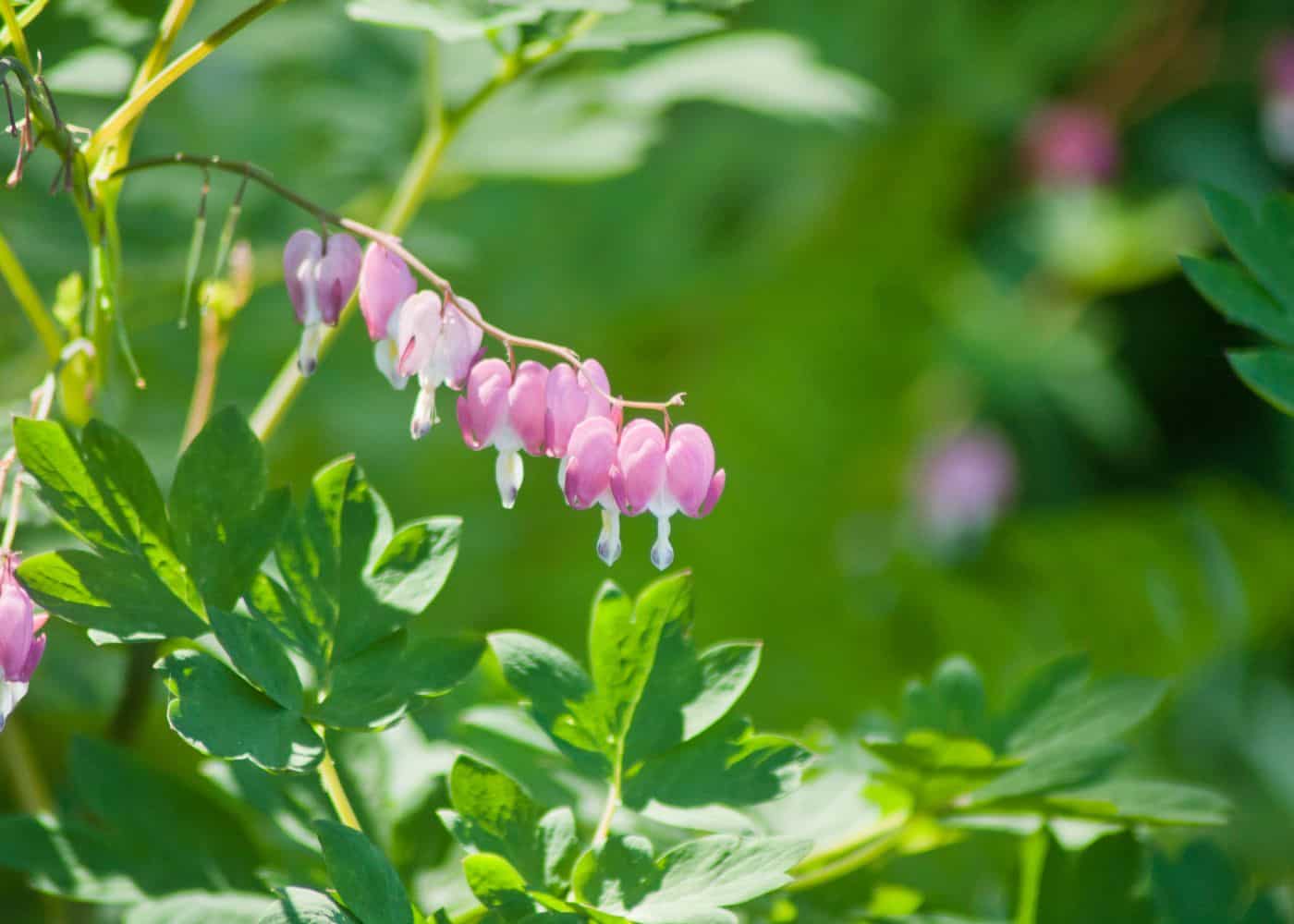
5. Bleeding Heart
Bleeding heart is a beautiful shade perennial that produces midsummer flowers in shades of pink, red, and white. It gets its name from the shape of its flowers, which resemble small hearts. Pink hearts are the most common color, although white is becoming more available in garden centers. Bleeding Heart is wonderful alongside hostas because it prefers similar growing conditions and provides a beautiful contrast in color and texture.
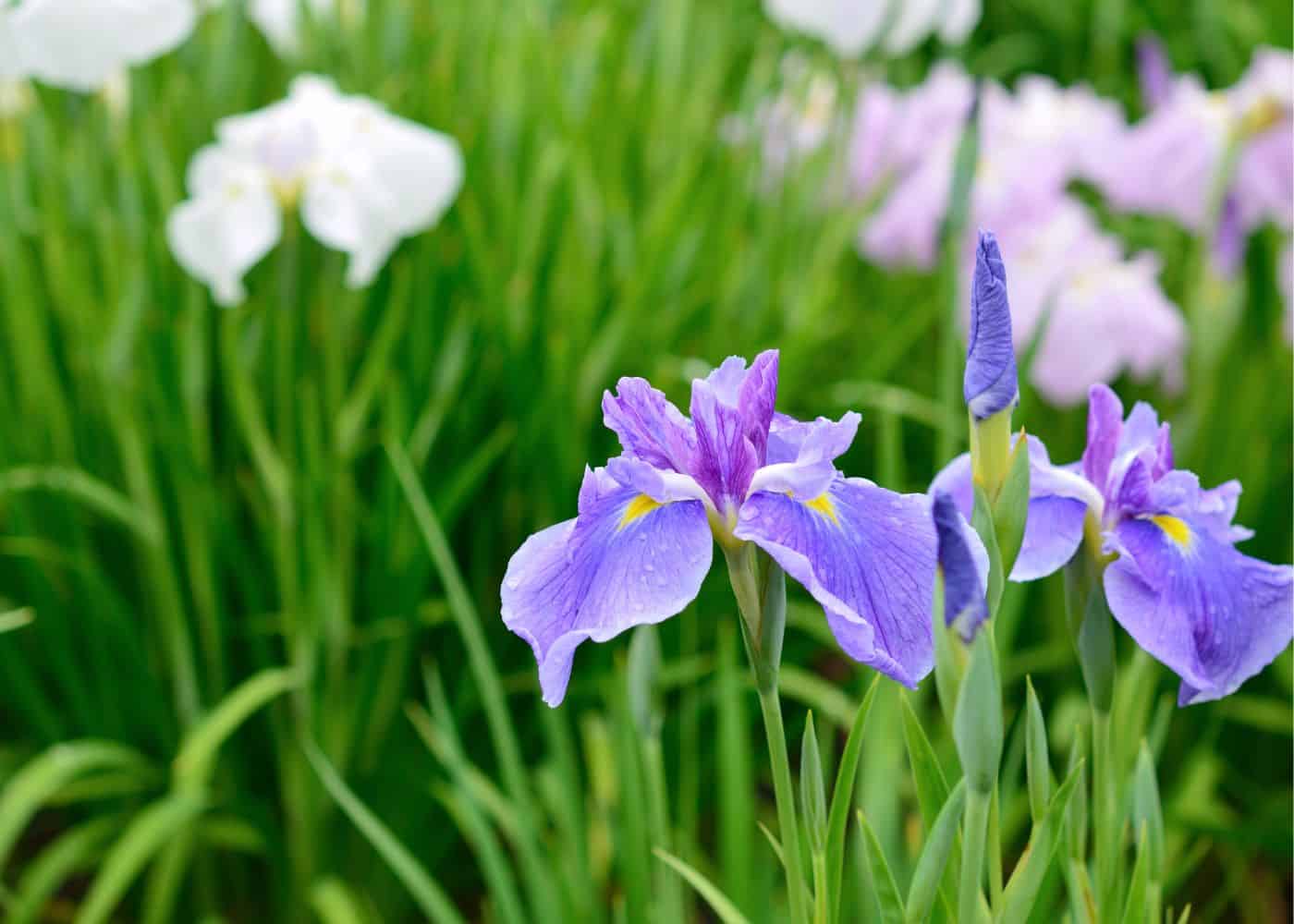
6. Japanese iris
Japanese Iris (Iris ensata) is an underused partial shade flower that comes most often with purple flowers. It blooms in late spring or early summer and does need a little bit of sun to bloom.
Japanese Iris is an excellent companion plant for hostas because it provides color and texture contrast. They can even be interplanted so the grass-like leaves grow between the dense mounds of foliage on smaller hosta varieties.
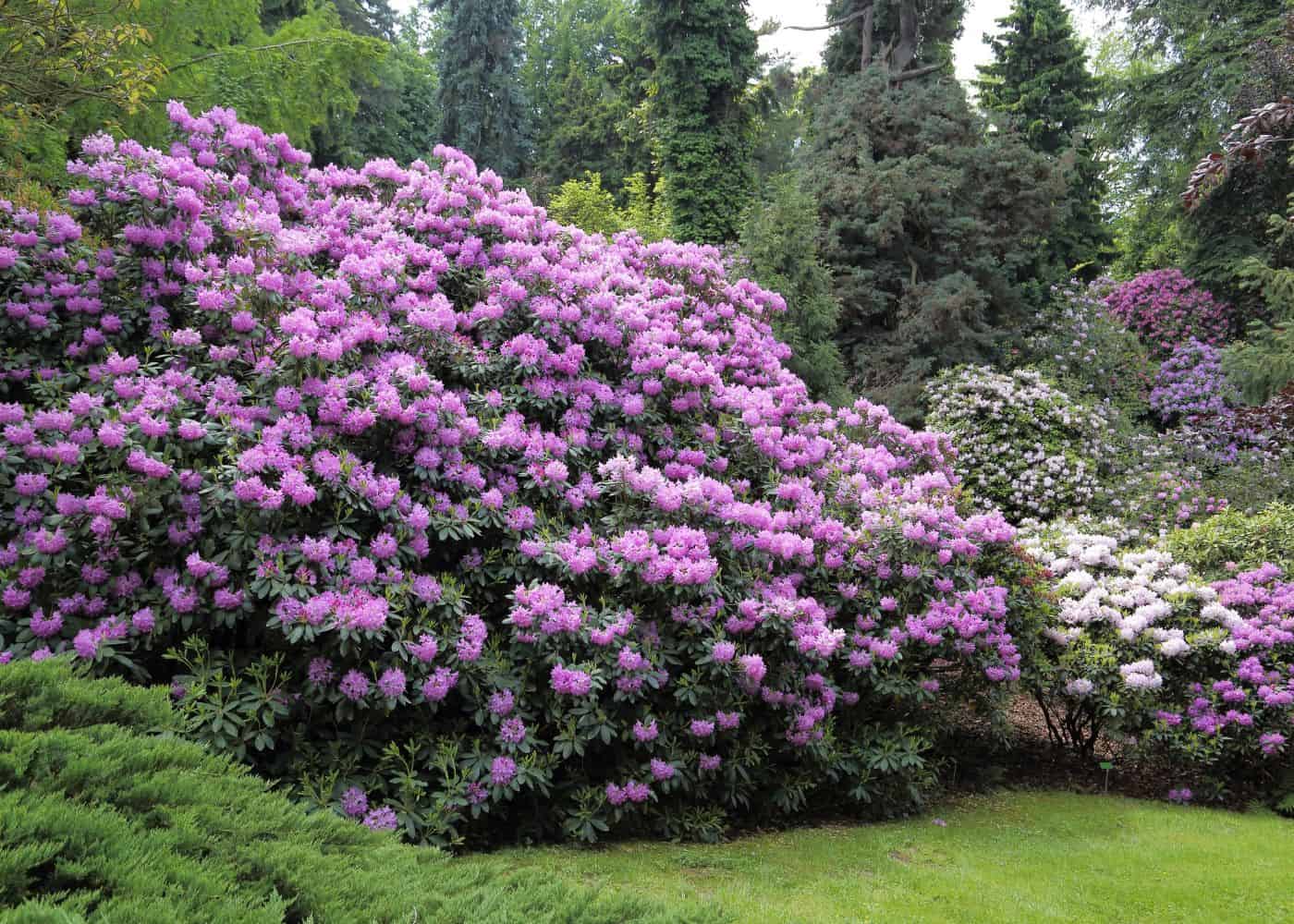
7. Rhododendron
Rhododendron is a beautiful flowering evergreen shrub that comes in many different colors of flowers. It prefers partial to full shade and moist, well-drained soil. Rhododendrons can grow anywhere from 2 to 12+ feet tall and wide. These shade-loving shrubs bloom in the spring with large clusters of flowers.
Rhododendron is a great companion plant for hostas because it provides structure, color, and interest in the garden with its dark green foliage and cheerful spring flowers during a time when hostas are not blooming. They also grow well in slightly acidic soil (similar to the ideal soil for hostas). Pair this flowering shade shrub with variegated hostas for a stunning shade garden!
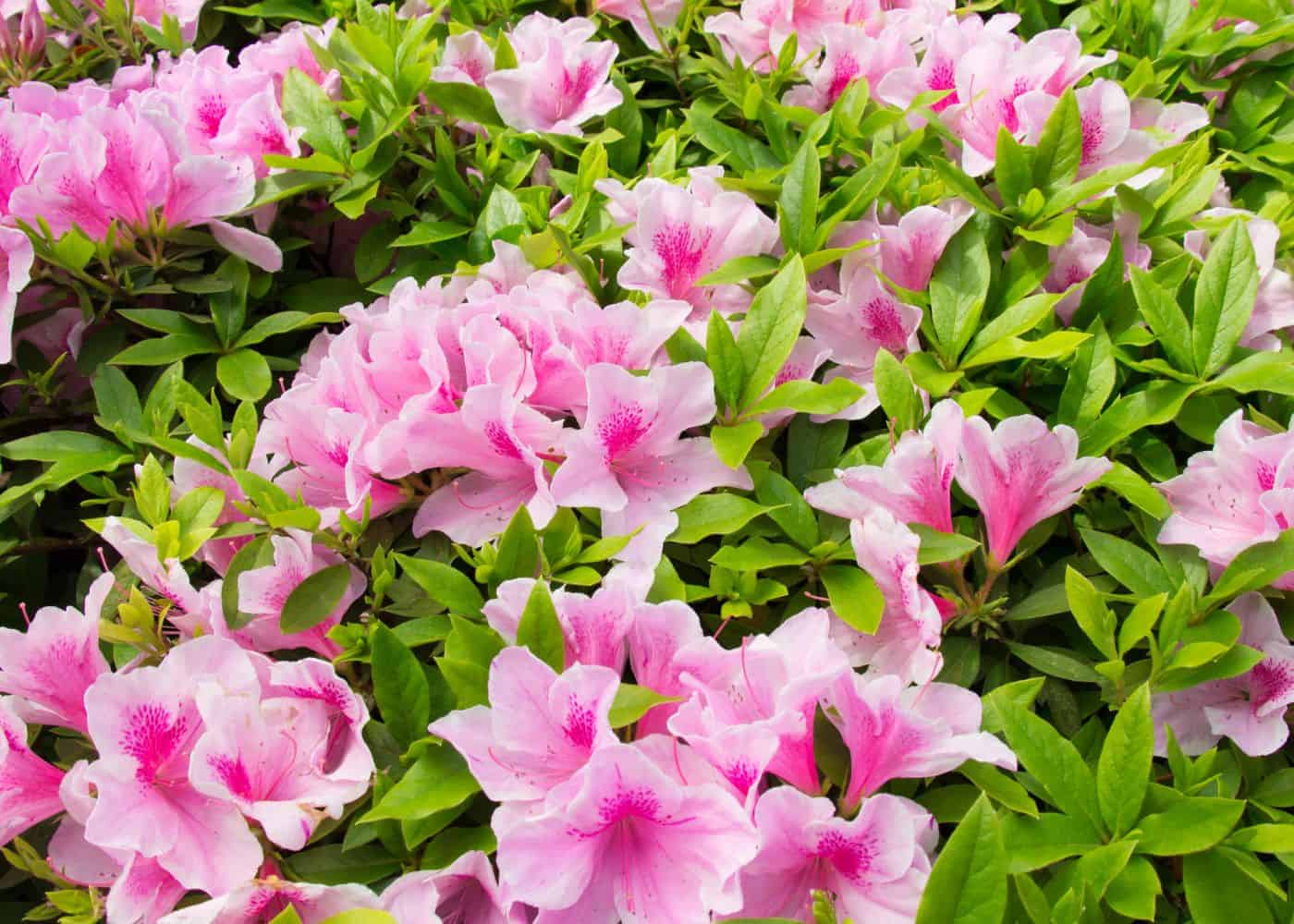
8. Azalea
Azalea is another flowering shade shrub that is related to rhododendron. While Azaleas are not evergreen like rhododendrons, they also prefer partial to full shade and moist, well-drained soil.
Many varieties of azalea are compact, reaching only about 3 feet tall and wide, making it a good choice for smaller gardens. They bloom in the spring with clusters of small flowers. Azalea is a good companion plant for hostas because it will provide some color in the garden when hostas are not in bloom.
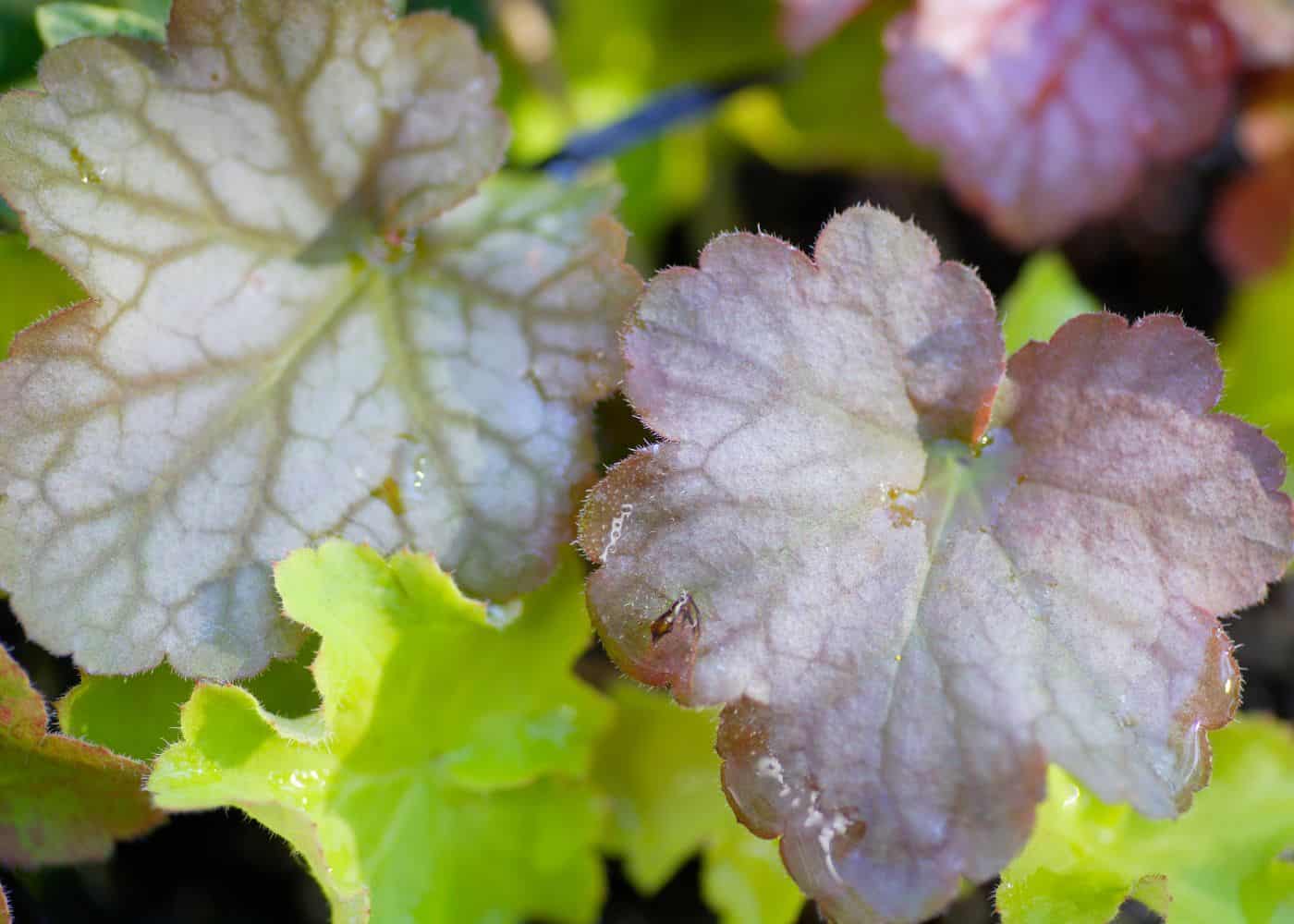
9. Heuchera
Heuchera are shade perennials with colorful foliage that prefer partial to full shade. Also called coral bells, heuchera provides contrast in both color and texture. The leaves of many cultivars are very colorful, with shades of shiny burgundy, chocolate brown, bright green, deep red, colorful purple, and glossy bronze. Heuchera also produces small, bell-shaped flowers that bloom in the summer.
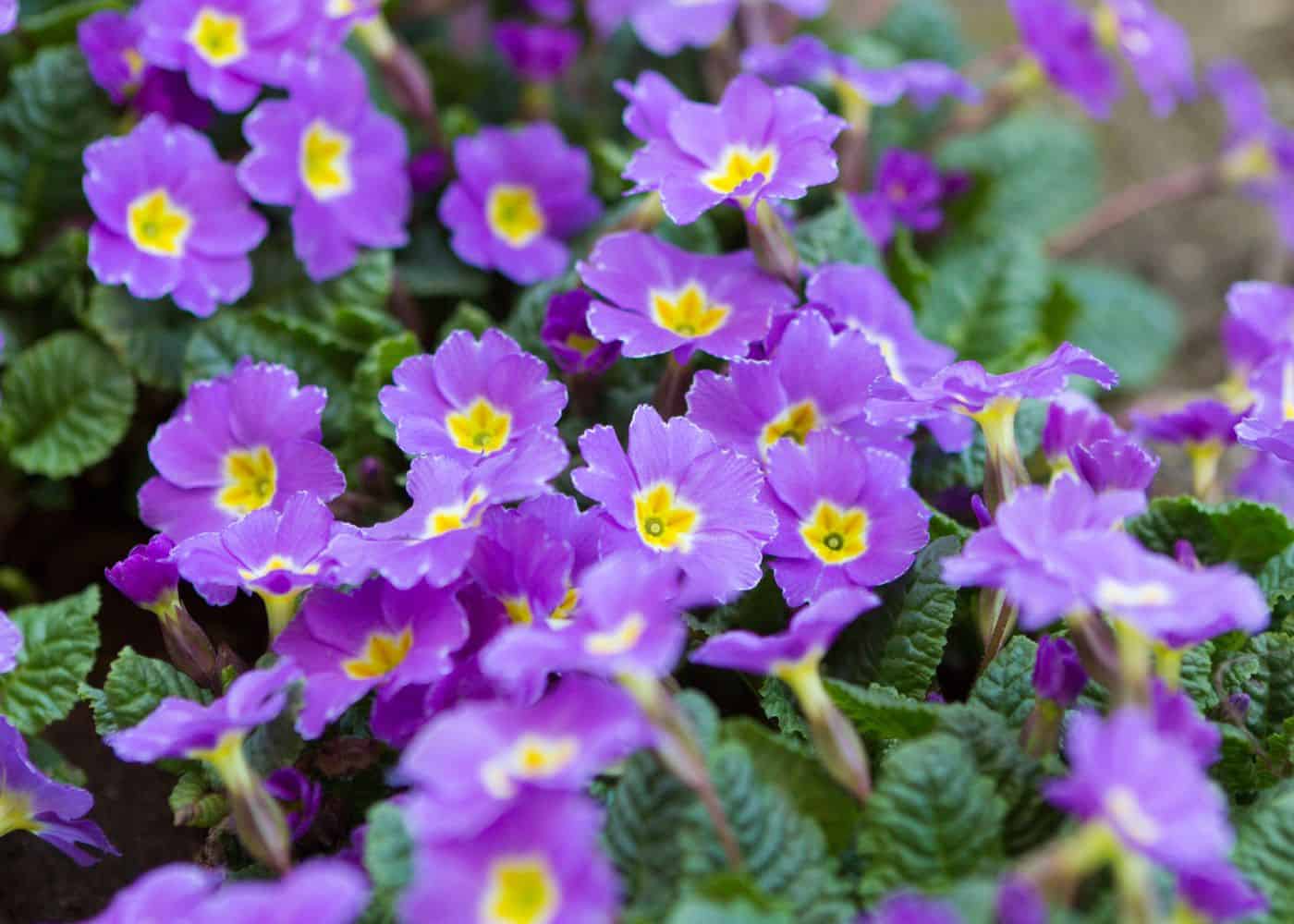
10. Primrose
Primrose are herbaceous perennials that make great companion plants for hostas. These cheerful early bloomers are available in all sorts of bright colors. They are quite short and can be planted in front of hostas. They provide colorful flowers in early spring while the hostas are just coming out of dormancy.
Primroses tend to bloom around the time that the first hosta spikes are emerging from the soil. Once they’re done blooming, the hosta leaves do a good job of camouflaging the primrose leaves for the rest of the growing season.
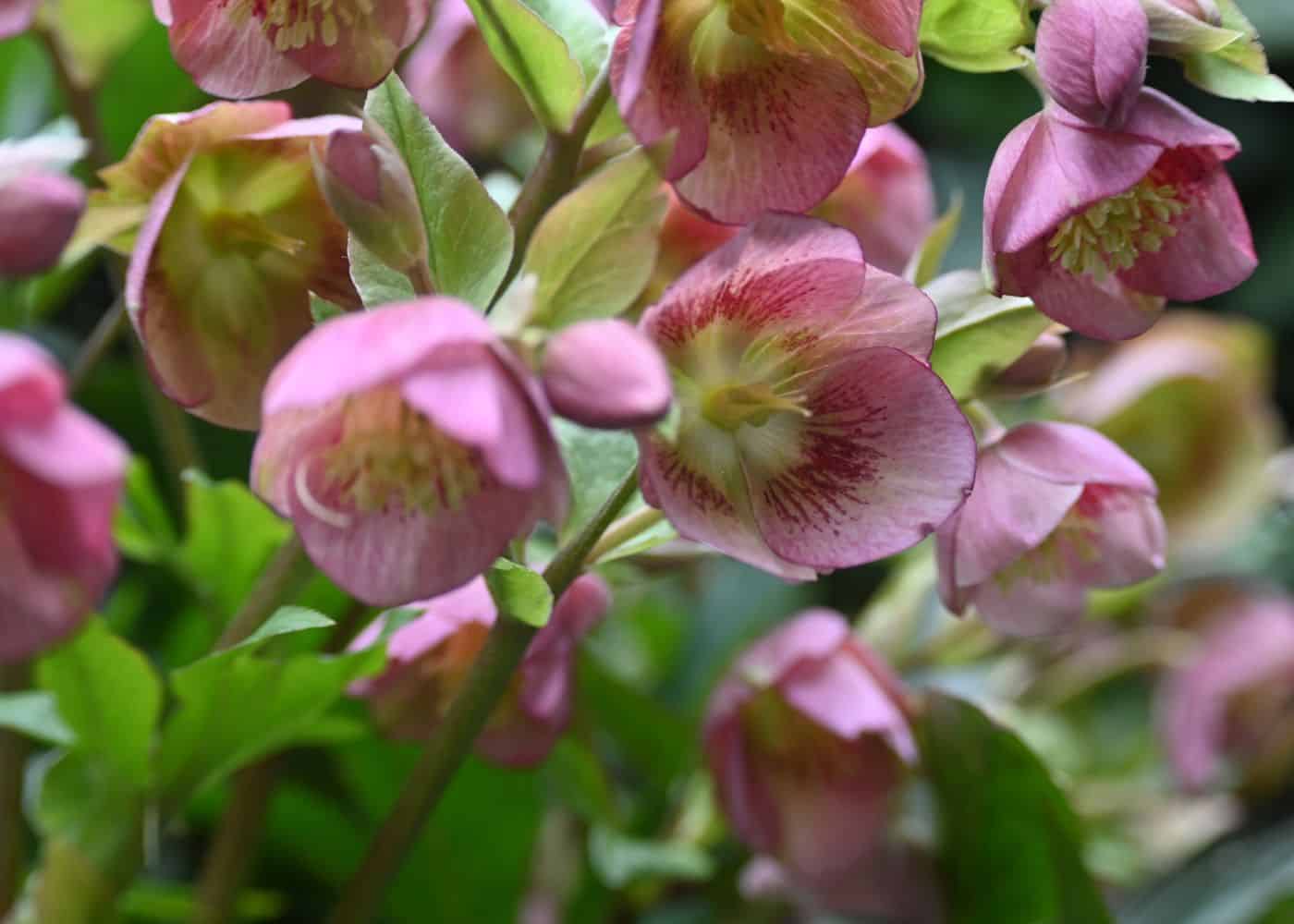
11. Hellebore
Hellebore is another early-blooming shade garden favorite. Plant these elegant flowers in front of your giant hostas for some of the year’s first flowers. Hellebores come in a range of colors, including white, pink, purple, and green. They have long-lasting blooms that appear in late winter or early spring.
Like hostas, these plants can take some bright sunlight in the morning but require afternoon shade in warmer climates. Some varieties also have very dark foliage that pairs nicely with blue-green hosta varieties like Blue Angel, Bressingham Blue, Abiqua Drinking Gourd, or the classic Halcyon.
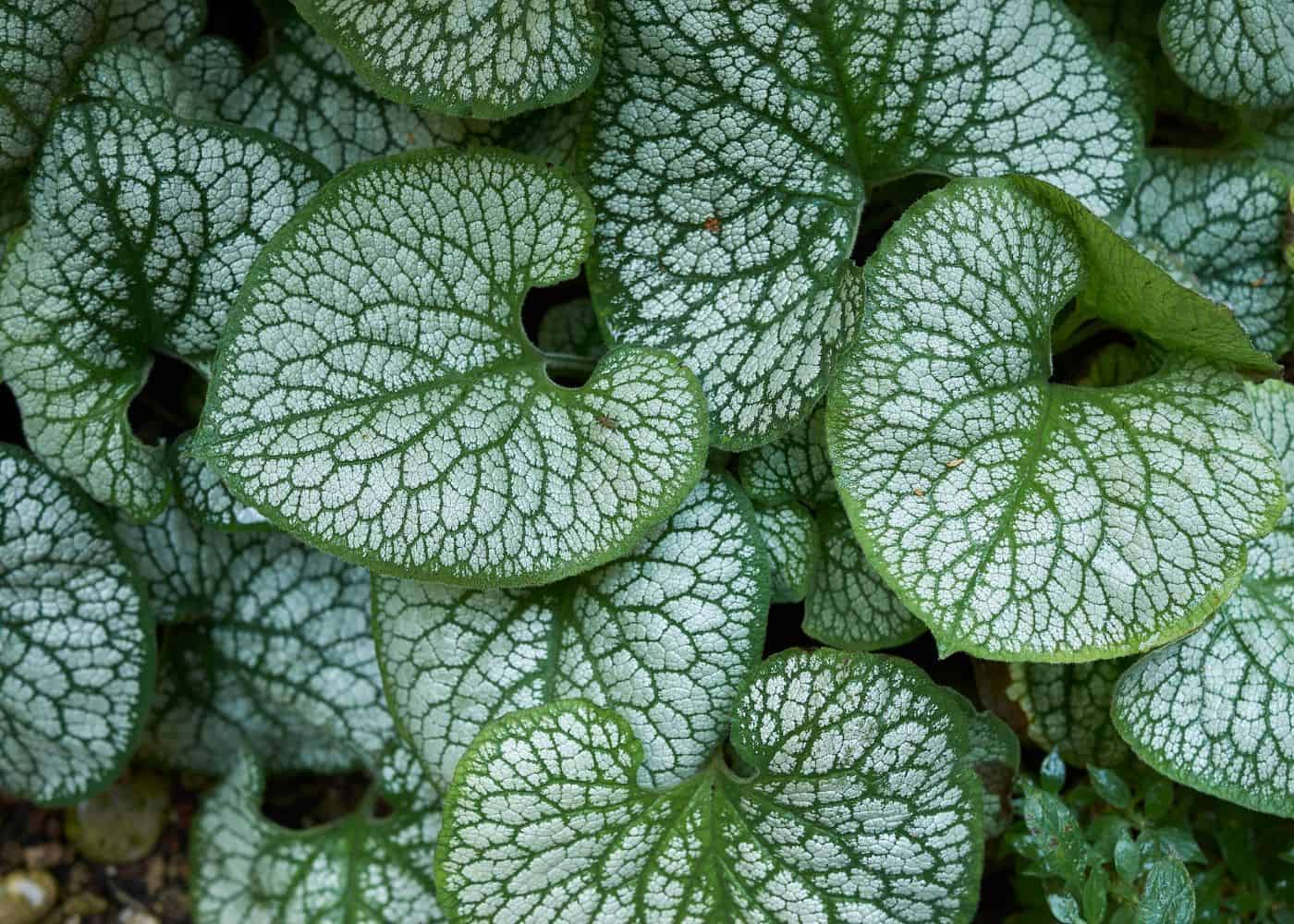
12. Brunnera
Brunnera is a foliage perennial with similar growing requirements to hosta. This hosta companion has large, heart-shaped leaves that are often variegated or have silver markings. Brunnera blooms in the spring with small, blue flowers.
It is a good companion plant for hostas because it contrasts color and texture. Due to the ornamental leaves and low maintenance requirements, Brunnera is one of the top picks for shade ground covers to grow with hostas. Be sure to choose a smaller hosta variety unless the hosta will be behind the brunnera plants.
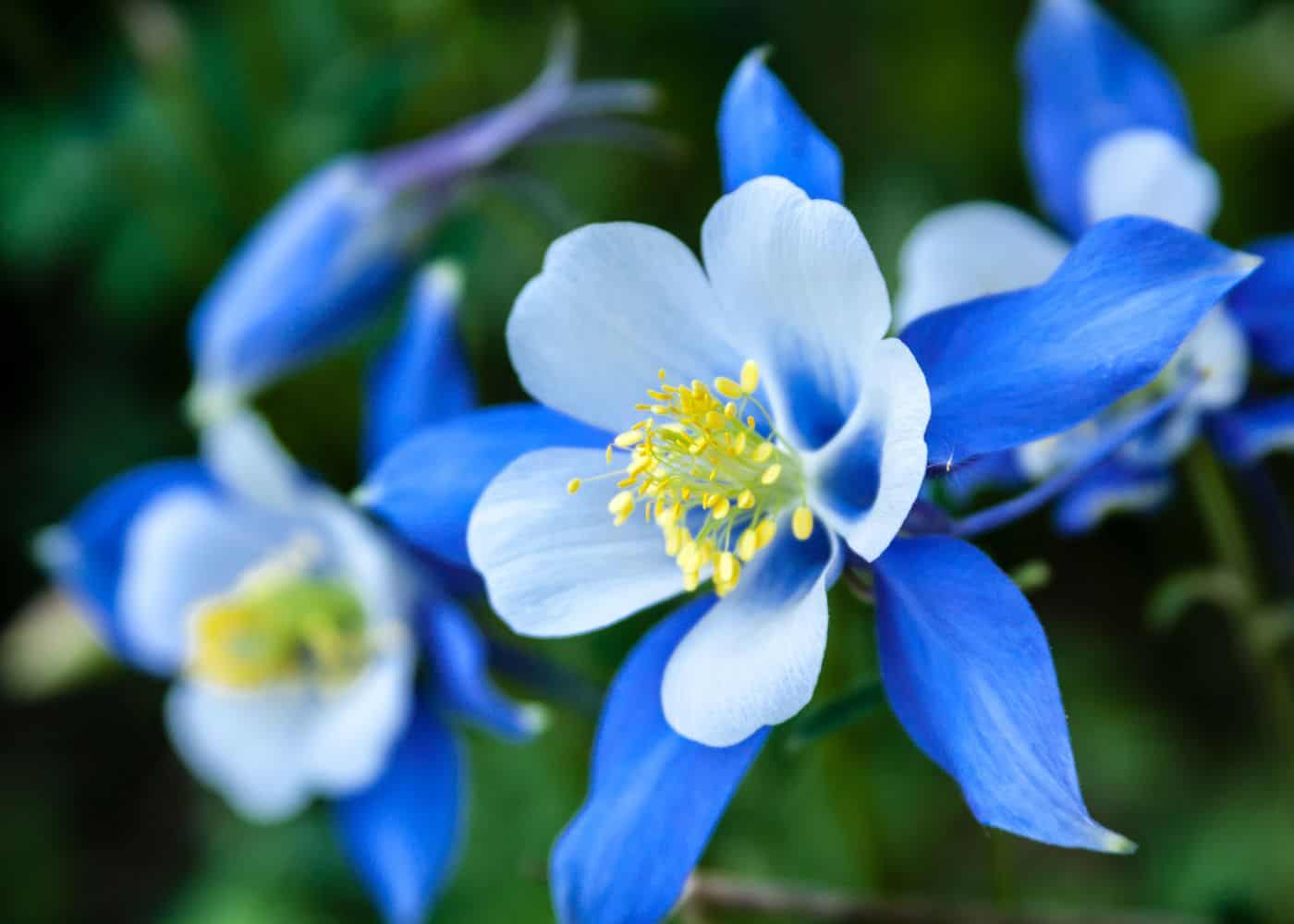
13. Columbine
Columbine (Aquilegia spp.) blooms in the spring with beautiful flowers that come in a wide range of colors. Columbine is a good companion plant for hostas because it provides color contrast and attracts beneficial pollinators to the garden. The delicate flower stalks rise above the foliage below for an ethereal woodland look.
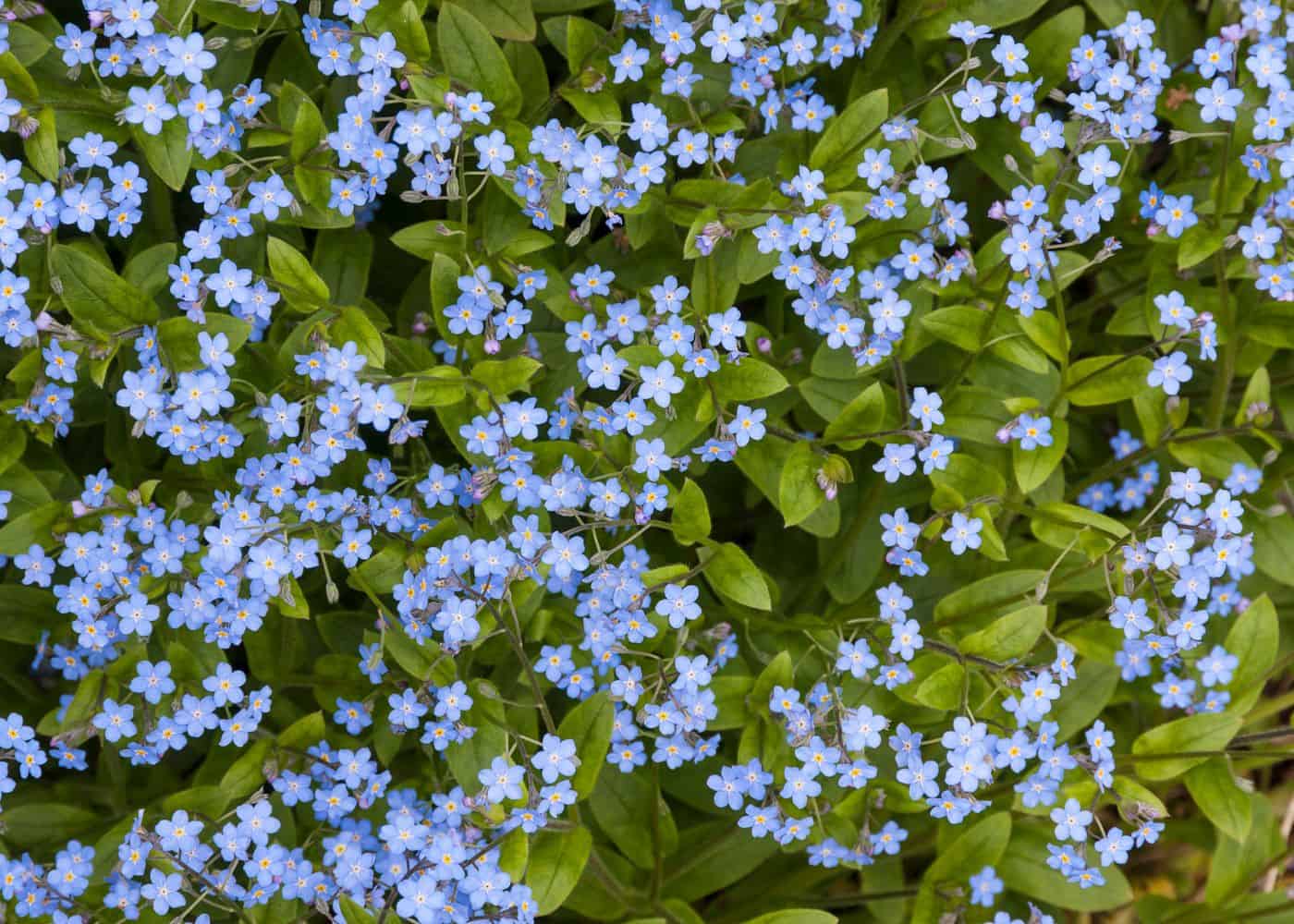
14. Forget-Me-Nots
Forget-me-nots (Myosotis spp.) are small, delicate flowers that bloom in the spring. These pretty little flowers are usually blue in color. Forget-me-nots make a good companion plant for hostas because they provide color contrast and attract pollinators to the area in early spring, where they’ll hopefully set up shop for the season!
Follow up the springtime blue flowers with some gorgeous blue and green hostas for the summertime. Forget-me-nots are shorter than most hosta varieties (except truly miniature hostas) and make excellent low-growing perennials in front of hostas as companion plants.
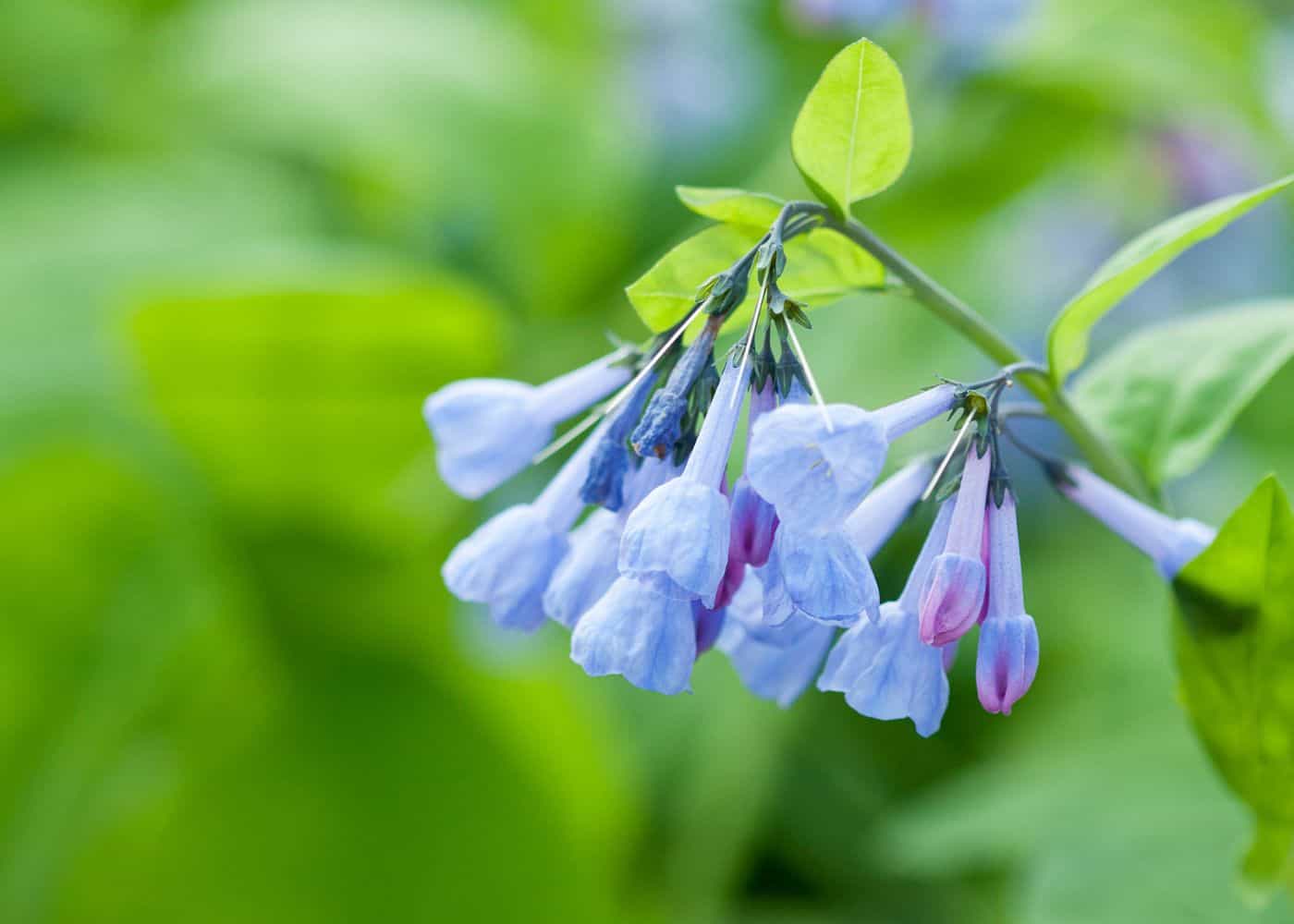
15. Virginia Bluebells
Virginia bluebells (Mertensia virginica) are another early spring-blooming wildflower that does well in shady areas. These flowers have delicate, bell-shaped blooms that are a beautiful shade of blue. Plant these shade-loving ephemeral perennials in the fall for an early spring floral display before the hostas are out. Virginia bluebell roots often ship in the fall and can be planted when you’re planting bare-root hostas from mail-order companies.
They may not flower terribly well the first year, but they will put on a beautiful display once they have become established in the soil. These shade perennials can be interplanted among hostas for some spring flowers peeking out of the fresh green foliage.
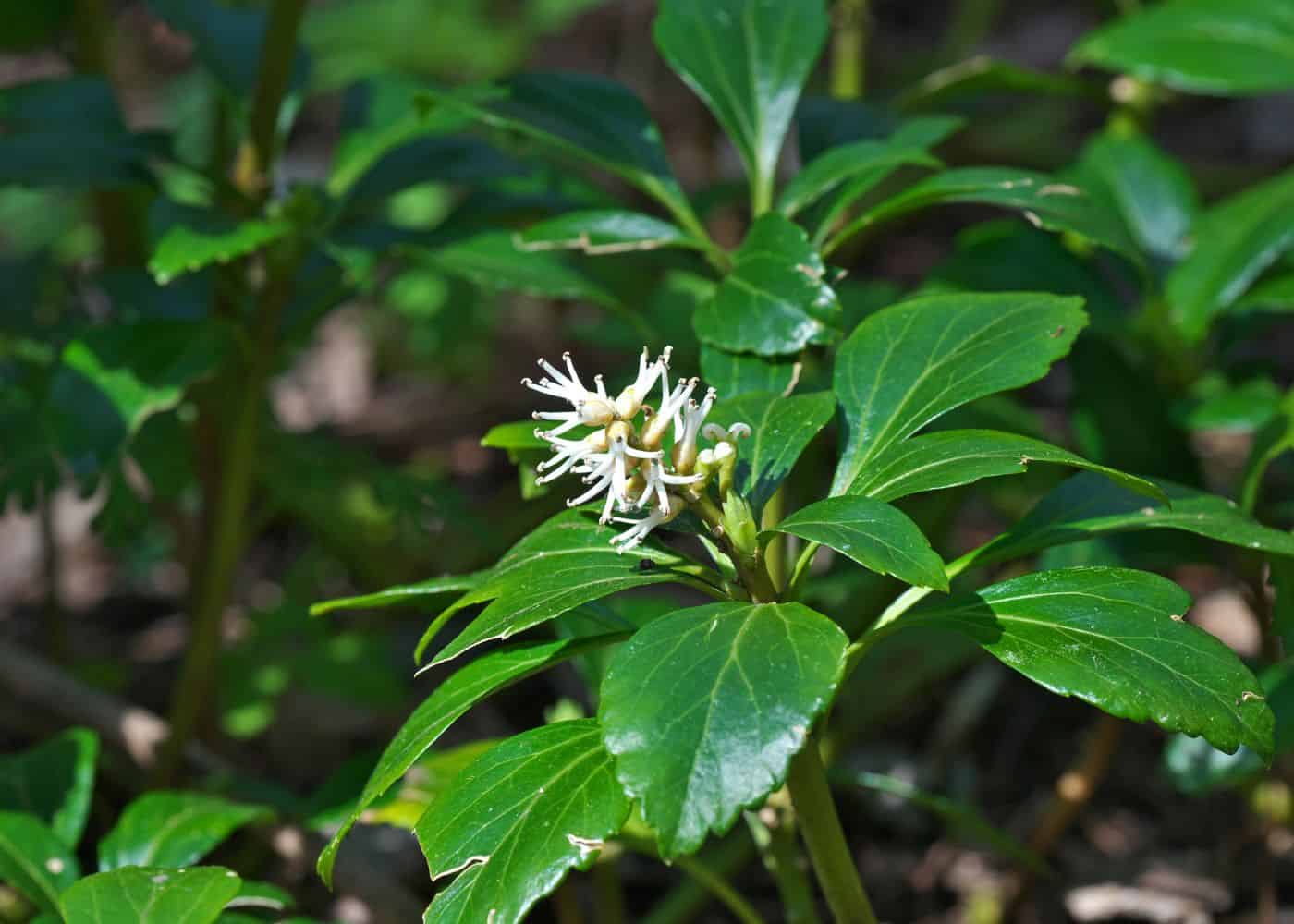
16. Pachysandra
Pachysandra is an evergreen ground cover commonly planted around giant hostas. This lovely shade ground cover plant has shiny, dark green leaves and white flowers that bloom in the spring.
Pachysandra is a good companion plant for hostas because it provides color contrast and helps to keep the soil moist and cool. This groundcover grows best in partial shade to full shade and tends to scorch in direct sunlight (especially in the afternoon).
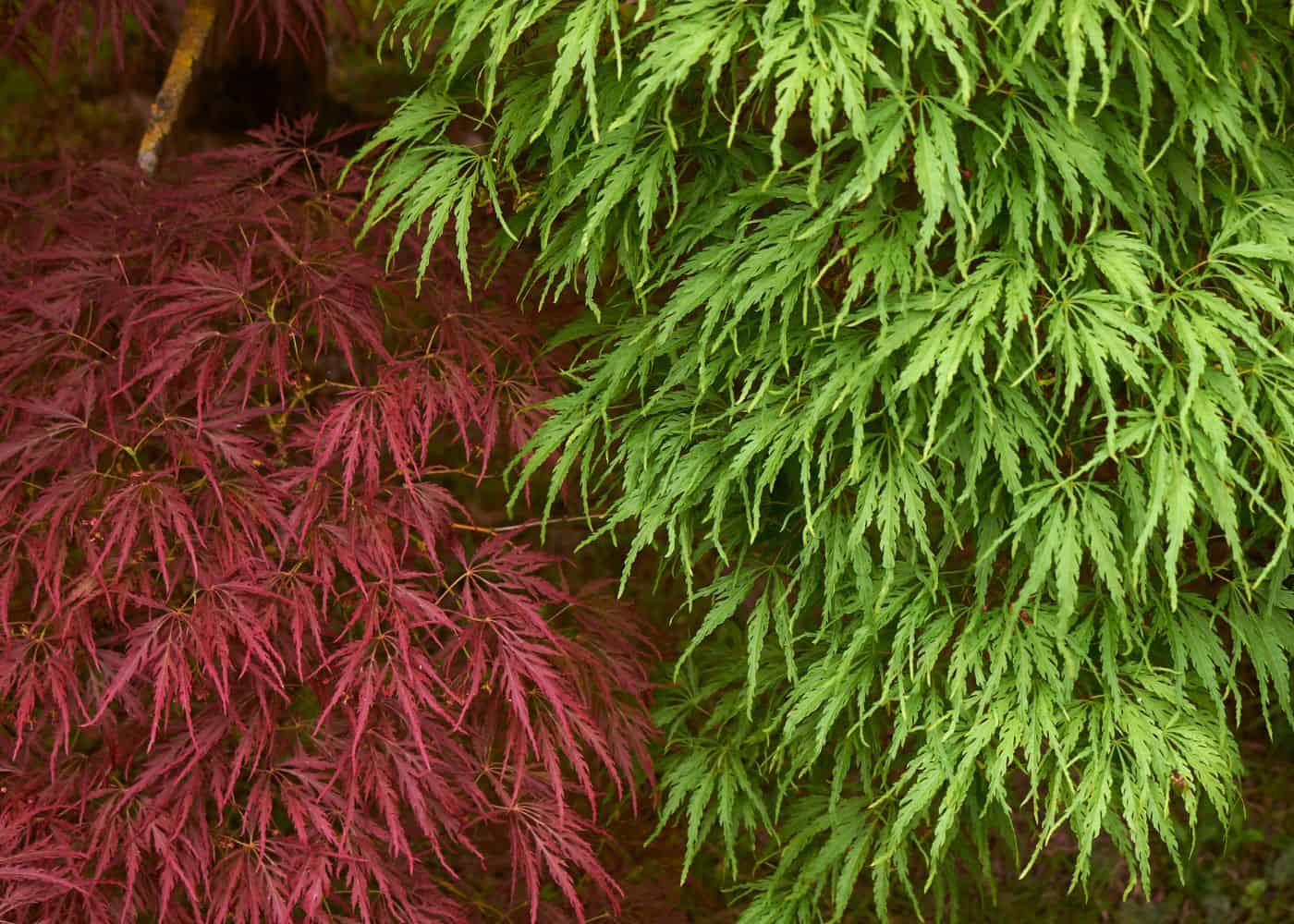
17. Japanese maple
Japanese maples (Acer palmatum) are small deciduous trees that are often used as specimen plants in the garden. They have beautiful lobed leaves that come in a wide range of colors.
Japanese maples are good companion plants for hostas because they provide structure in the garden during the fall and winter months. They also can create the shade necessary for growing hostas in hot climates with the harsh sun.
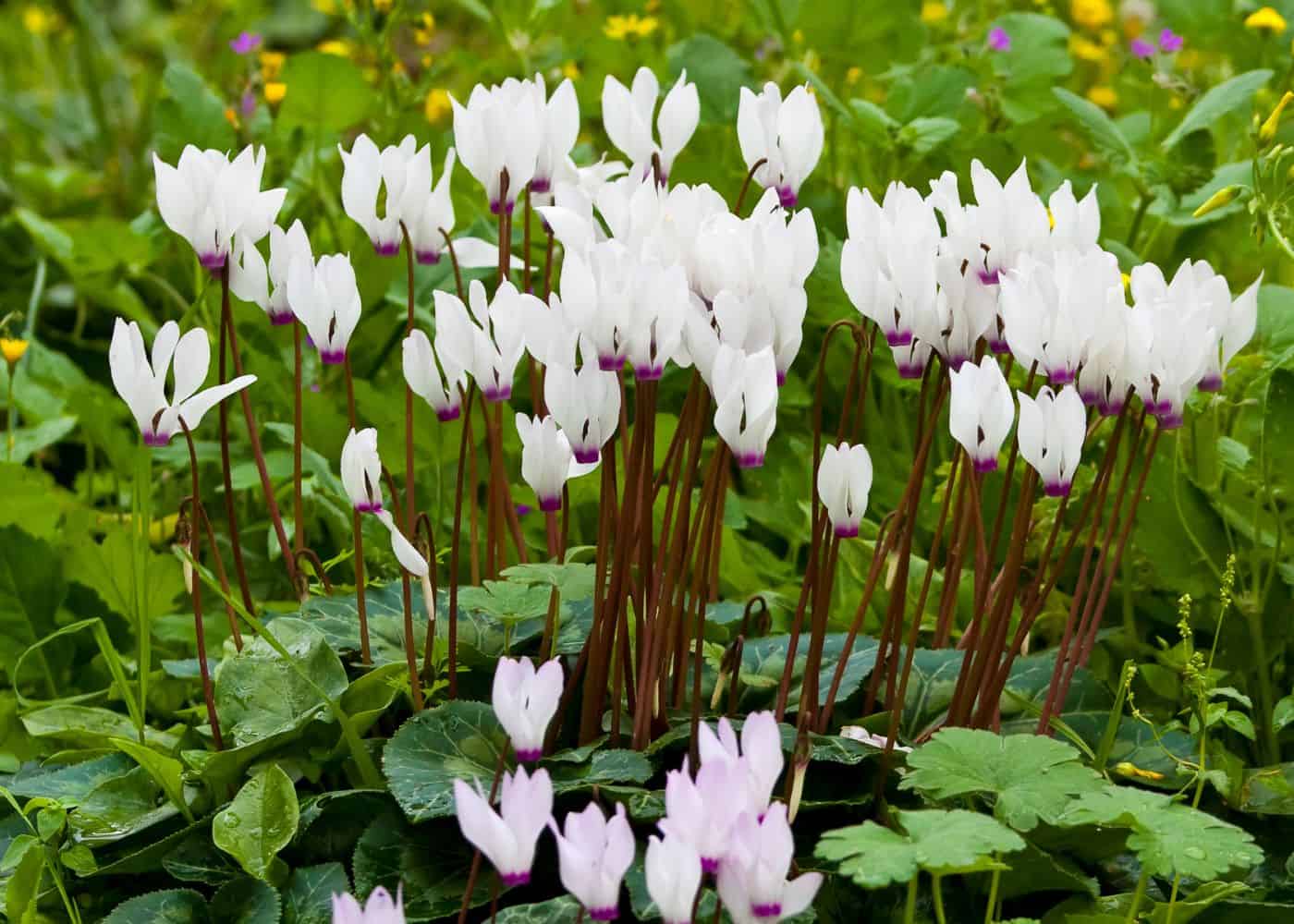
18. Cyclamen
Cyclamen is one of the best companion plants for hostas. These shade-tolerant plants bloom in the fall and winter. The flowers come in a wide range of colors, including pink, purple, red, and white.
Cold-hardy cyclamen species make good companion plants for hostas because they provide contrast and interest in the garden when hostas are not in bloom. Cyclamen can be planted in the fall and are often shipped with spring bulbs and bare-root hostas in mid-autumn.

19. Wood anemone
Wood anemone (Anemone nemorosa) is a spring-blooming wildflower that does well in shady areas. These plants have delicate, usually white blooms that appear in early spring. Many wood anemones have pale pink flowers or soft white blooms, and there is a lot of variety in foliage color, including shades of burgundy and lime green. They can be more difficult to find at nurseries than hostas and some other popular shade-loving plants, but they’re well worth searching out!
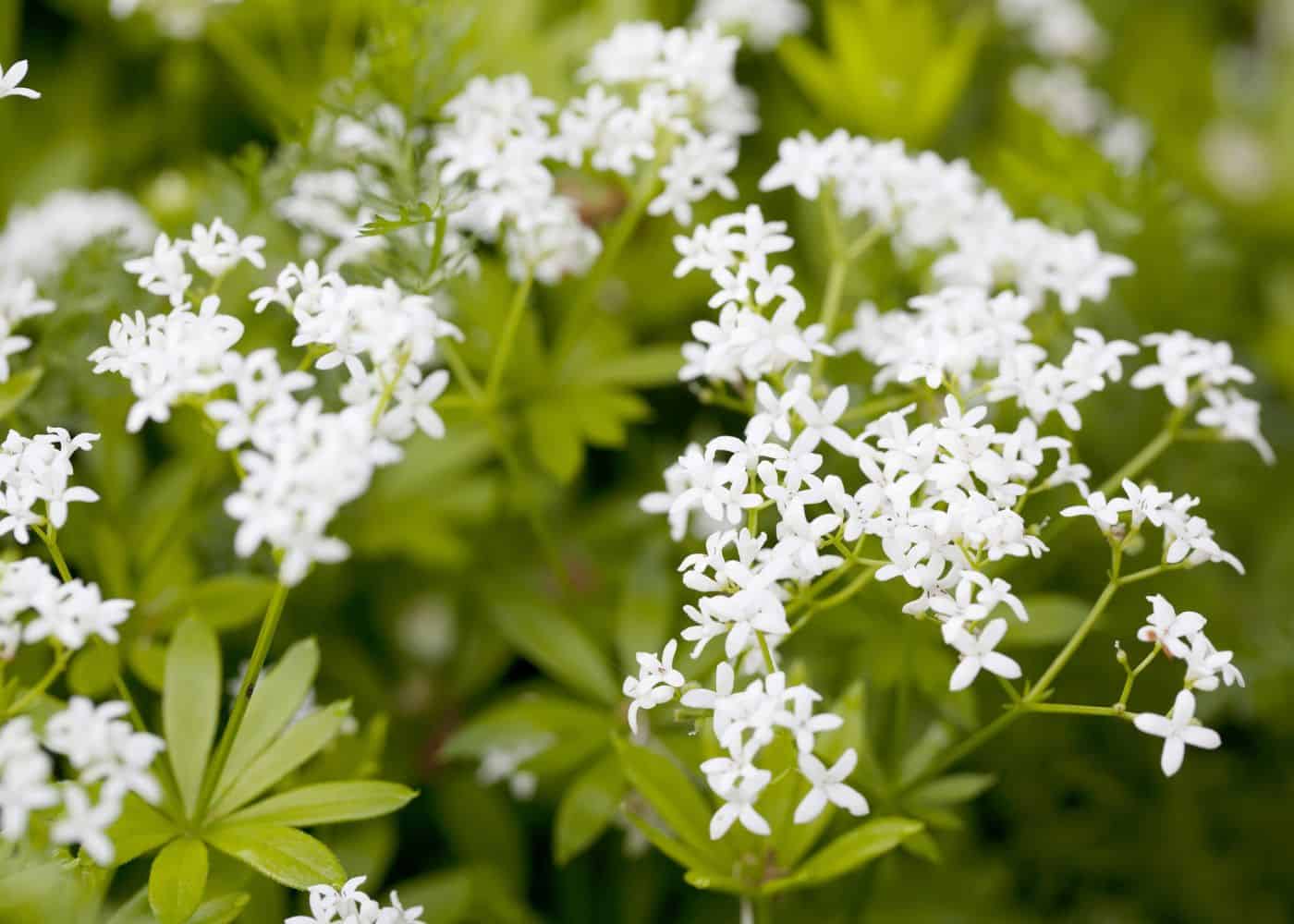
20. Sweet woodruff
Sweet woodruff is one of the best shade ground cover plants to pair with hostas in shade gardens. This perennial has soft and feathery leaves topped with delicate flower clusters that bloom in mid-spring just as hostas are leafing out. The lovely foliage provides a fine contrast to the large tropical-like leaves of most hosta plants.
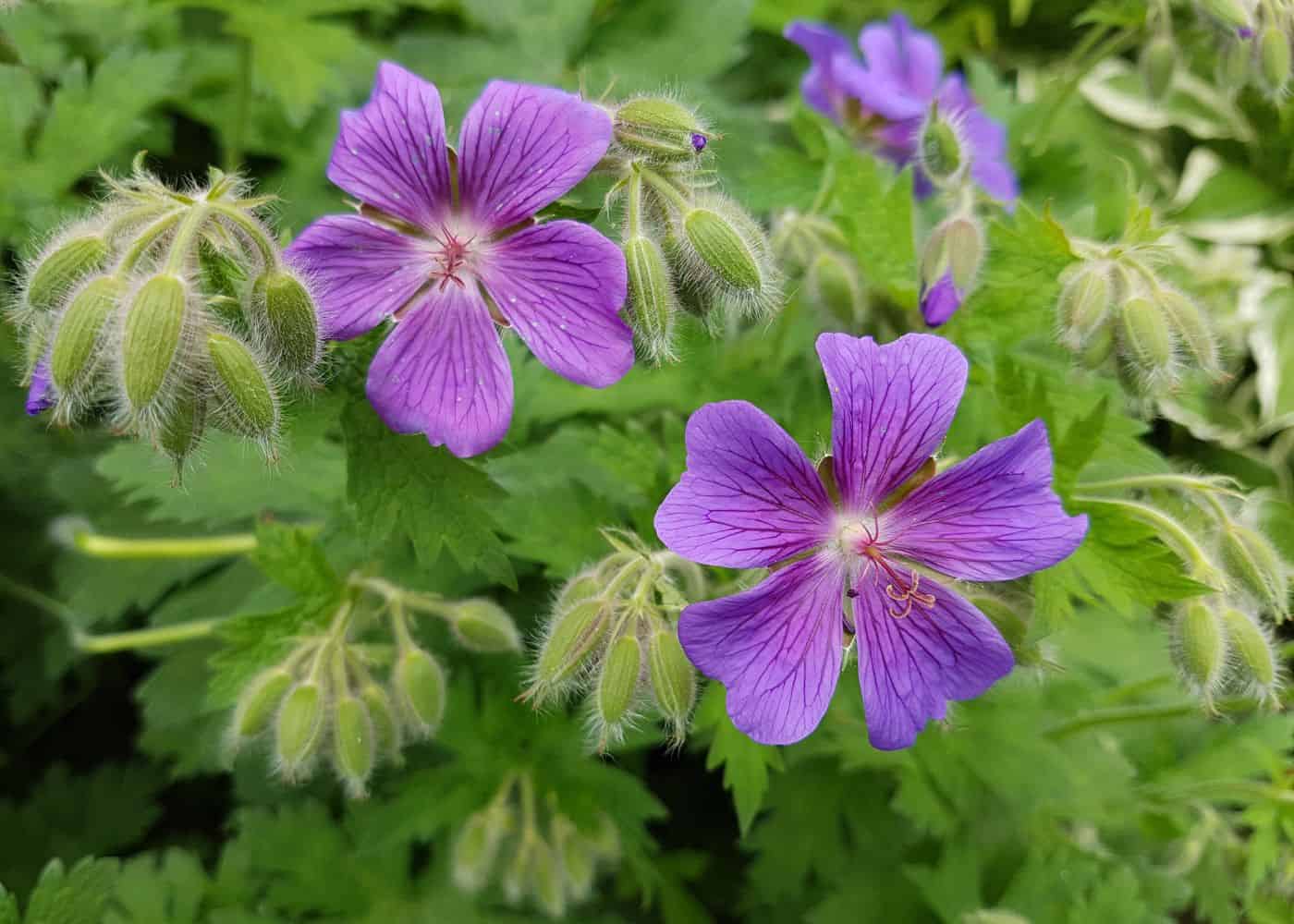
21. Perennial geraniums
Perennial geraniums, also called hardy cranesbill geraniums, are a popular shade-loving plant for adding flowers to hosta gardens. These rabbit-tolerant plants have thick leaves with a fuzzy texture. Their flowers bloom in midsummer, providing beautiful contrast to the nearby hosta’s broad leaves.
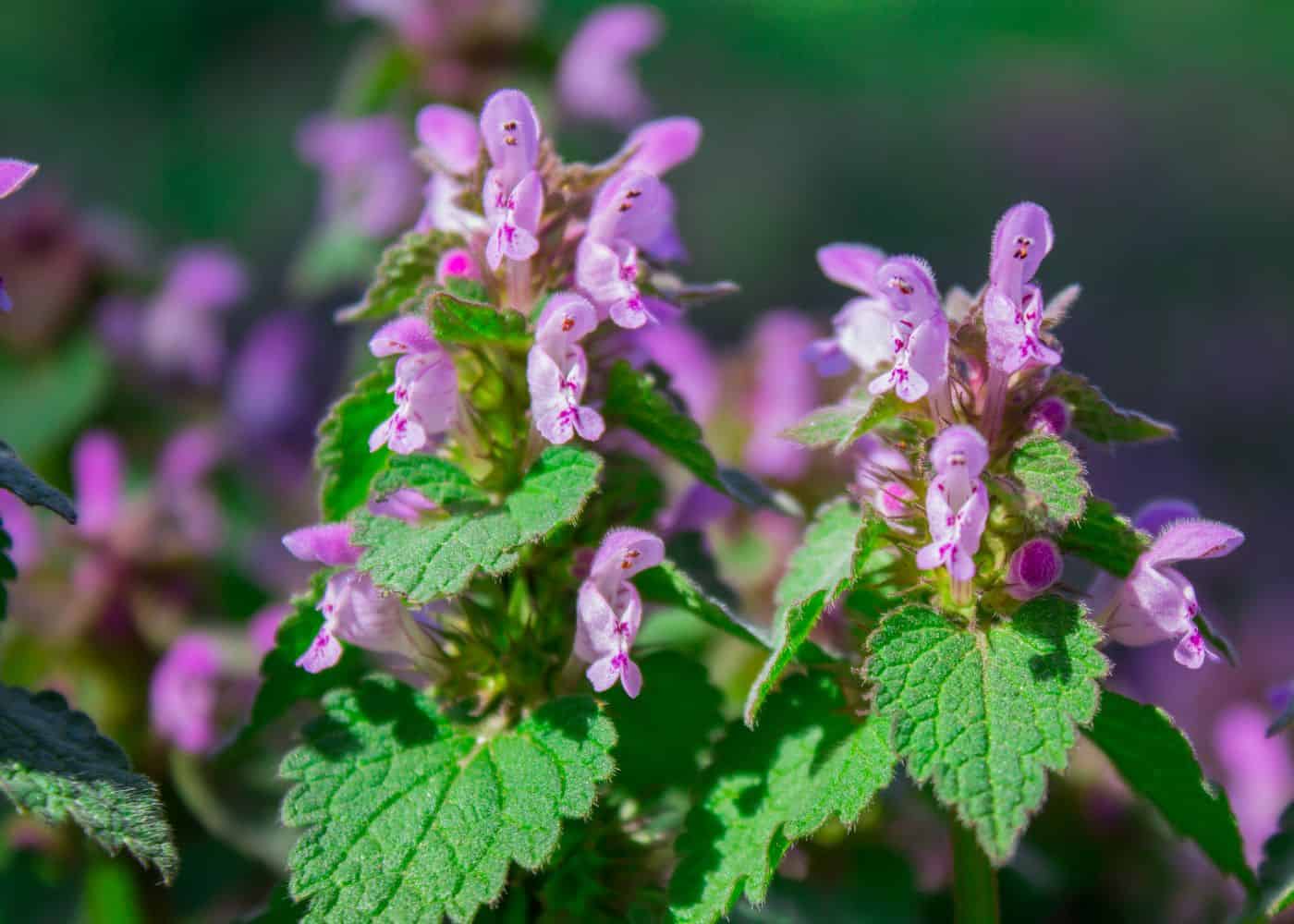
22. Spotted dead nettle
Spotted dead nettle (Lamium maculatum) is another low-maintenance perennial to add to your hosta gardens. These lovely plants tend to have green and white foliage and purple flowers (such as the popular ‘Purple Dragon‘). These informal plants are better suited to woodland gardens than to manicured shade areas.
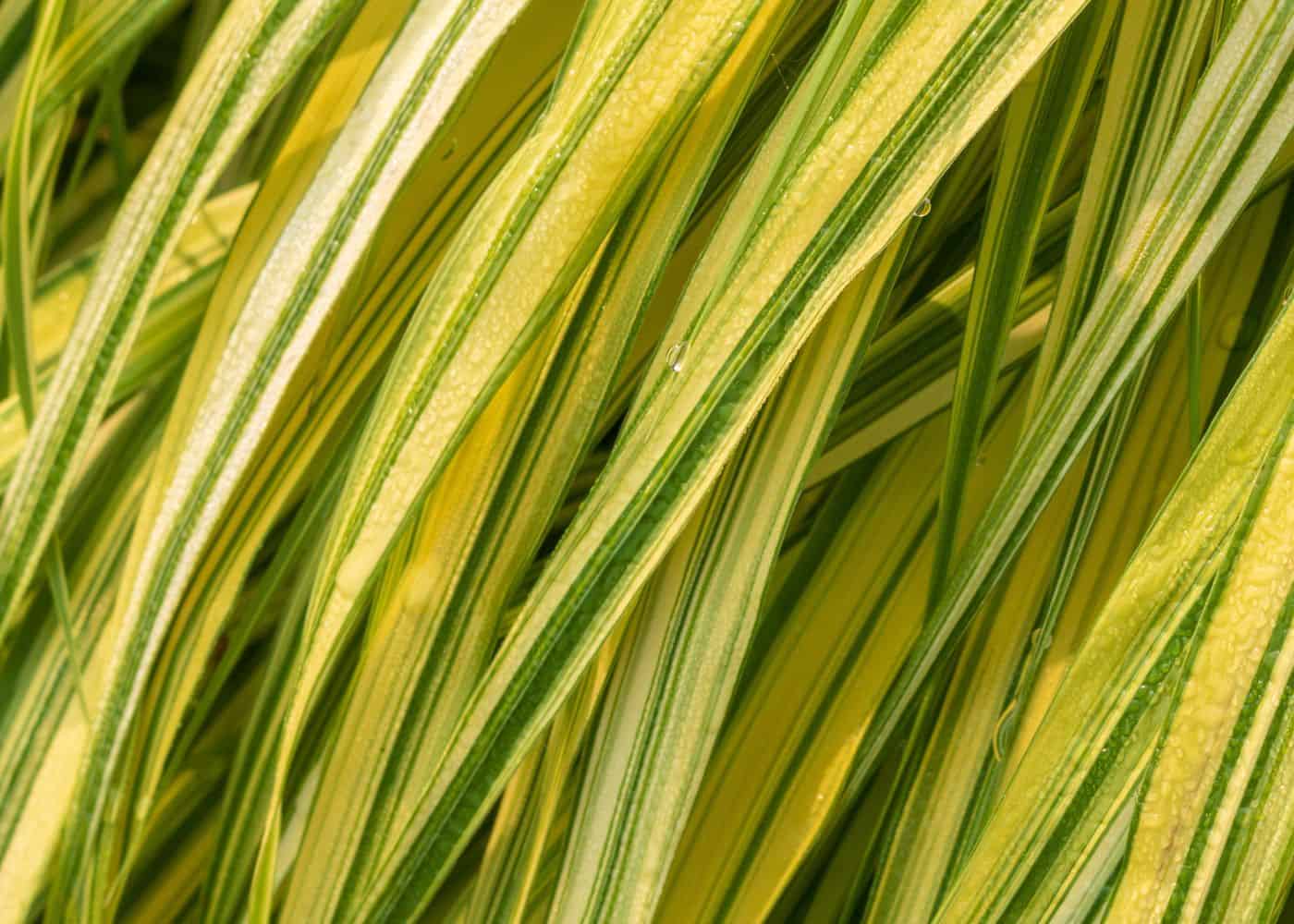
23. Japanese forest grass
Japanese forest grass is a popular ornamental grass that is tolerant of shade. Most varieties are variegated and are a great way to add some depth and visual layers to the garden. The angular foliage also provides a textural contrast to the hosta foliage and the leaves of other plants nearby. Golden Japanese forest grass is the most popular, but darker varieties are also available.


